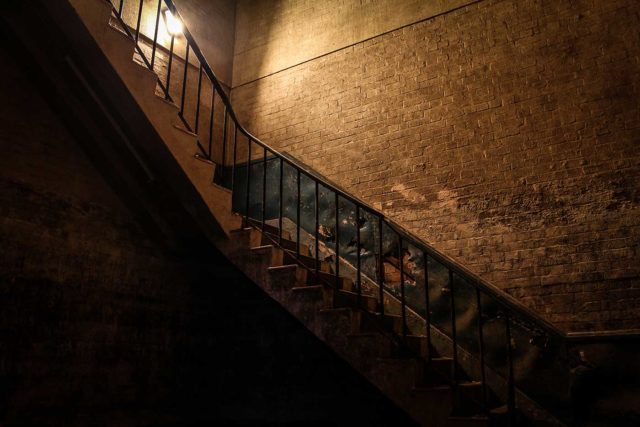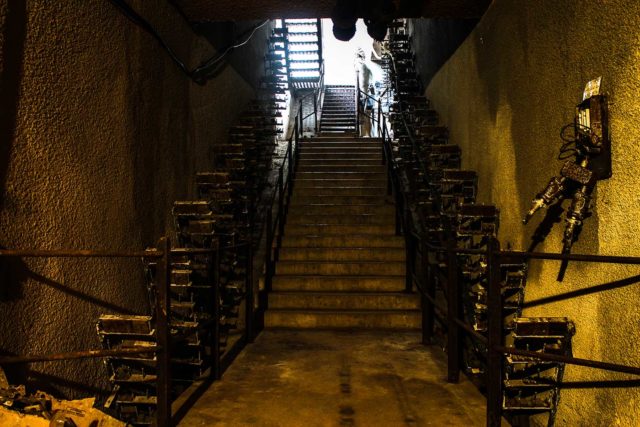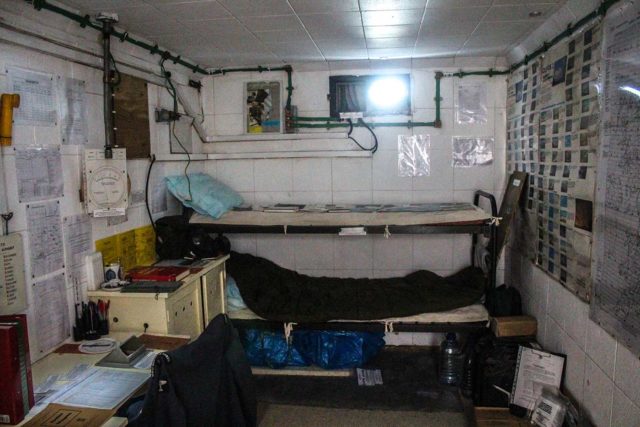The Cold War sparked fears around the world of a potential nuclear attack, especially against the United States and the United Kingdom. This resulted in the repurposing of many military posts and bases from the Second World War, in the name of civilian protection. Interested in more abandoned sites? Check out Darmon Richter’s book, Chernobyl: A Stalker’s Guide.
RAF Wartling
RAF Wartling was a Royal Air Force base that opened in the early 1940s as a Ground-Controlled Interception (GCI) radar station. Initially a rather primitive setup, it was expanded to include a brick-built operations block in July 1943.


The base is best known for protecting Britain from German bombers during WWII. Its radar technology was able to track approaching German aircraft, allowing British forces to intercept them. It’s reported Wartling helped in the destruction of 380 German V-1 flying bombs.

Not long after the conclusion of the war, RAF Wartling was upgraded and began operating under the U.K.’s newly launched ROTOR program. The Cold War defense initiative allowed for its radar systems to be upgraded, as well as new operation suites built.
The renovations took four years, from 1951 to 1955, and by the end, the base was home to a new two-level secure bunker made from tungsten-reinforced concrete walls.


Wartling’s radar system was once again upgraded in 1958, this time to the new Decca AMES Type 80 search radar. The technology was pointed to the south, ensuring it monitored British airspace above the Thames River.
The new radar also made other nearby bases redundant and many were shut down by the RAF. This resulted in Wartling receiving a promotion to Master Radar Station in April of that year.


However, as time progressed, RAF Wartling began to show its age, and in December 1964, it was shut down, with nearby RAF Bawdsey taking over its duties. Twelve years later, it was sold to a private seller, the Marquis de Abergavenny, who converted many of its aboveground buildings into personal residences.
Unfortunately, the remainder of the base quickly fell into disrepair


Restoration work is currently underway to revive RAF Wartling. In 2004, 2.75 million liters of water were pumped from its lower level. As well, numerous repairs have been made over the years, including the restoration of security doors and walkways; the repair of lighting and electrical fixtures; and the sealing of water ingress points.
Cuckfield ROC Post
The RAF’s Royal Observer Corps post in Cuckfield first went into service in 1925. It operated as a Special Constable Observer post, a pre-nuclear, interwar branch of the ROC, where volunteers acted as “spotters” for the National Air Defence Plan.

Nearly 40 years later, in June 1962, the post was turned into a nuclear monitoring post. The aim of this and other posts across Britain was to provide the United Kingdom Warning and Monitoring Organisation (UKWMO) with detailed reports regarding surface fallout conditions during the height of the Cold War.
Three posts worked together in order to accurately triangulate the coordinates of a nuclear detonation. They were tasked with determining whether a detonation was a surface blast or, in the event of a mid-air detonation, at what altitude it occurred.


Due to budget cuts within the RAF, Cuckfield and other posts were retired in 1968. However, it was later reopened after flooding forced the closure of a post in nearby Ditchling. It saw continued use until 1991, after which it was officially disbanded.

To this day, the post remains structurally sound, despite its furniture having become covered in mold. Restorations began in 2009 with the re-painting of furniture and fixtures, as well as the sourcing of equipment that had long since been removed.
RAF Upper Heyford
RAF Upper Heyford opened in July 1918 and just a few months later witnessed the inception of the Canadian Air Force. During the German rearmament of the 1930s, it was repurposed into a training base, where bomber squadrons were prepped before shipping out to East Anglia and Yorkshire.

The onset of the Cold War saw the base become home to the United States Air Force, as did others. During this time, it was home to the Air Force Strategic Air Command (SAC), the U.S. Air Forces in Europe (USAFE), and the F-111 strike aircraft. In case the need arose, an American plane was also in the Quick Reaction Alert area, ready to take flight.
Upper Heyford was also the temporary base for a number of Air Force squadrons, including the 7509th Air Base Group, the 66th Tactical Reconnaissance Wing, the 3918th Strategic Wing, and the 20th Tactical Fighter Wing. The last to occupy the base was the 620th U.S. Air Base Wing. After its departure in September 1994, the base was returned to the British Ministry of Defence.

At present, many of RAF Upper Heyford’s buildings are still being used by police forces and boat builders — they’ve even been used to house automobiles. Others, however, have been vandalized and left exposed to the elements. Its on-site hospital, in particular, has graffiti painted on its walls and has suffered extensive water damage.
More from us: Remains of the Devil’s Slide Bunker, California
Most recently, a section of the base, Heyford Park, was sold to the Dorchester Group, which has begun building residential properties on the site. Its airplane hangars were also turned into temporary morgues in 2020 during the COVID-19 pandemic.
